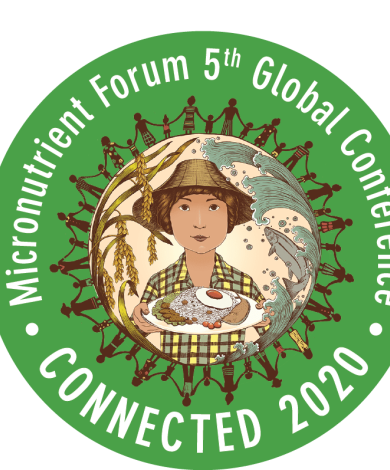It was indeed CONNECTED, the Micronutrient Forum 5th Global Conference that took place virtually from the 2nd to the 20th of November 2020. It lived up to its promise to be one of the best virtual events with similar, or perhaps even stronger programming interaction than a face-to-face conference could have offered. The technical team were very responsive in resolving the technical platform connection issues that I encountered, and hence ensured that as an attendee, I had the best platform experience to engage with the latest evidence and innovative technologies in micronutrient programming, emerging strategies, best practices and insights from successful implementation. This forum was a true reflection of the flexibility and innovation brought as a result of the Covid-19 crisis.
As a practitioner in this shared journey of aiming to end malnutrition, the presentations on the Global state of Micronutrients helped me to understand where we stand in terms of estimates of micronutrient deficiencies, what uncertainties remain, and how to address the emerging data gaps. I have struggled to understand the latest evidence on the Vitamin B group, so the overview of the four neglected B vitamins Thiamine (B1), Riboflavin (B2), Niacin (B3) Pyridoxine (B6) stood out for me. The evidence highlighted their biochemical roles, the main manifestation of their deficiency states, notable recent research of interest and examples of regional localities with endemic and intermittent occurrence of deficiencies. It was interesting to realise that although the micronutrient program implementation focus has been on Cobalamin (B12) and folate (B9), the neglected four Vitamin Bs are relatively prevalent at a regional scale. There was good reflection of what happens when a neglected vitamin, Niacin (B3), is unattended to. Monotonous maize based diets were highlighted as a primary diet cause of vitamin B3 deficiency (Pellagra). I found this clarity a wonderful advocacy for the Ugali, Sadza and Fufu consumers like myself to advocate for fortification of our maize flours, and as consumers to be aware of what our maize base diets should contain for optimal nutrition. This insight could be really helpful in revisiting the prevention and treatment efforts towards the Pellagra outbreaks observed in the recent regional humanitarian responses in southern Africa.
I am currently focussing my work on learning and supporting efforts to routinely care for children with extreme nutritional deficits, e.g. wasting. As such, the Philippines Government presentation on managing the transition of treatment of child wasting, from an emergency response programme to a core component in the national universal health care package, gave me important perspectives on the collective efforts needed to reach all wasted children. The Program effectiveness presentations and poster presentations reminded me that there are no ‘one size fits all’ strategies or actions. It also highlighted the need for contextualising the implementation of lessons learned and of the power of engaging with those that are navigating complex systems, to ensure nutrition outcome gains both for today’s and for future generations.
Challenges in collecting diet-related data, especially for maternal diets, have become apparent as the support to update national food-based policies, guidelines and regulations continues. Incorporating lived experiences and lessons on what is on my plate and how it gets there is crucial. The Efficacy of Food Fortification and Biofortification updates provided hope that in this new decade more people, especially those with limited access to micronutrients, may have increased options to improve the consumption of vital micronutrients through their staple foods such as maize, rice, beans and cassava. And finally, the presentations on the upcoming Food Systems Summit Actions consolidated for me, the need to do things differently, to foster food systems for nutrition without losing sight of unfinished nutrition agendas and I do hope that the summit this year clearly articulates nutrients at the core of any commitments made, along with health systems as a base for treatment, when all else fails.

